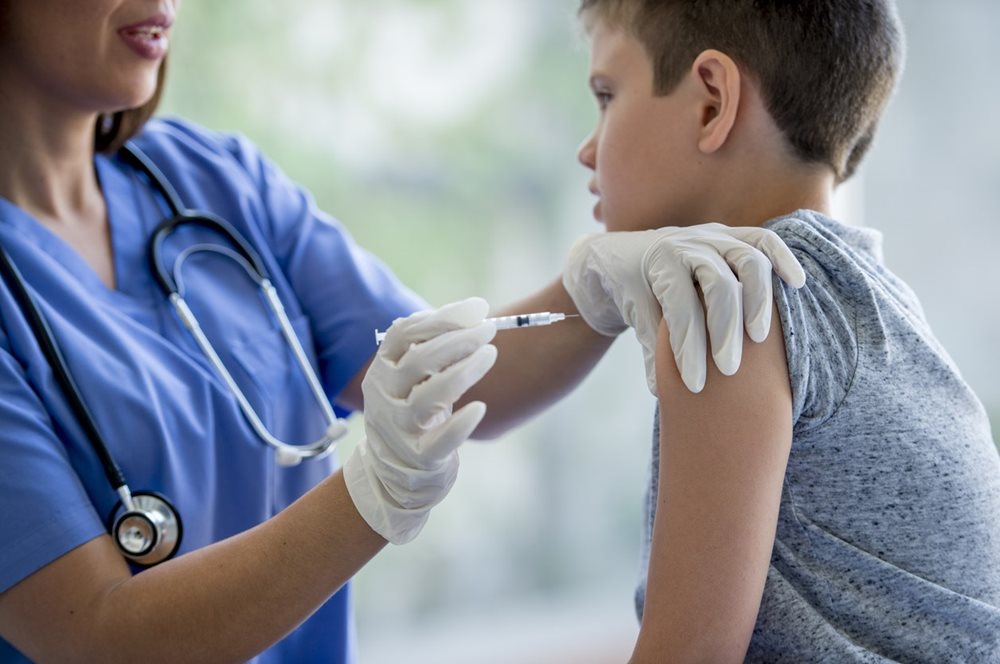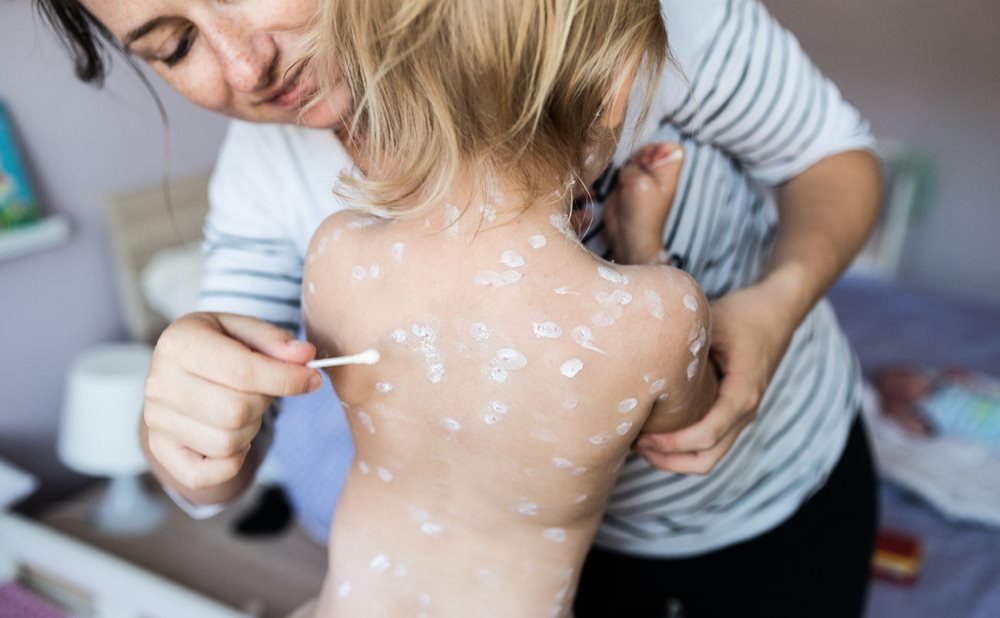Chickenpox: Symptoms, Causes & Prevention

Chickenpox occurs worldwide as a childhood disease, which lasts four to five days and has the features of fever and a widespread rash of small blisters (vesicles). These are usually distributed on the chest, back and face, with few blisters evident on the arms and legs. It’s generally a mild and short-lived illness in children, while adults are at greater risk of severe chickenpox. “In most cases, a child will present with a fever and a rash”, says Dr Neil Reddy of Precision Healthcare. “After a few days, the symptoms begin to subside. It is uncommon to experience complications.”
About the Virus
Chickenpox is the illness that occurs when a person is first infected with the varicella-zoster virus, VZV, also known as human herpes virus type III. During the first (primary) infection, the virus spreads throughout the body – evident from the distribution of the rash. Like its relative, herpes simplex, the varicella-zoster virus persists in a person for the rest of their life.
Reactivation & Shingles
Sometimes chickenpox can be more severe, with internal organs like the lungs and liver affected. An individual can only ever have one episode of chickenpox in their lifetime; once they’ve recovered, they have life-long immunity. However, the virus that causes chickenpox belongs to the herpes virus family, meaning that after recovery from the initial infection, the virus never actually leaves the host. Instead, it ‘hides out’ in a latent state, not causing any illness, in certain nerve cells. This latent virus can be reactivated by a variety of different factors like stress, malnutrition and old age. The reactivated virus will cause illness, but in another form, different to the first infection. In the case of chickenpox, the reactivation of the virus many years after the attack causes shingles, a band of painful blisters confined to one area of skin.

Highly contagious
The varicella-zoster virus is present in the throat secretions of a person just before or after they develop the chickenpox rash. These secretions can reach another person as airborne droplets. The skin blisters of chickenpox and shingles also contain infectious viruses, which can reach the nose or mouth of another person, for example via fingers. Face-to-face exposure to someone with early chickenpox will put you at risk of infection. Even spending some time in the same room as a person with early chickenpox will put you at risk. The highest risk is associated with living in the same household as a person with chickenpox, and nine out of 10 people who have not had chickenpox before will contract the disease under these circumstances.
Symptoms of chickenpox
A mild headache, moderate fever and feeling unwell usually starts a day or so before the rash appears. In adults, these preliminary symptoms can be more severe, with flu-like muscle pains. The rash initially appears as pinkish bumps of a few millimetres across, usually somewhere on the trunk (chest and abdomen). Within hours the bumps become itchy blisters containing a clear fluid (vesicles). These quite rapidly break down and crust (scab), but a new crop of vesicles appears just as the previous crop starts to crust. Typically, 250 to 500 vesicles will form. In chickenpox, the rash is most dense on the trunk with fewer vesicles on the face and limbs. Those on the scalp may be accompanied by swollen lymph glands at the back of the neck. Vesicles can also occur in the mouth and throat, under the eyelids and in the genital and anal openings. On these wet surfaces the vesicles tend to break down into ulcers and can be quite painful. One consequence of this is that swallowing may be difficult. Vesicles usually stop appearing by the fifth day of the rash, and most will be crusted by the sixth day.

Possible complications with chickenpox
While chickenpox is usually a mild illness in children, there are a number of possible complications. Because the rash is very itchy and children cannot help scratching, the most common complication is infection of vesicles by bacteria; this is known as secondary infection. The skin will redden and the vesicle sites will produce pus. In more severe cases the infection penetrates the tissues under the infected skin, causing swelling. While the chickenpox rash does not cause skin scarring, secondary skin infection can. A rising temperature can be a warning sign of serious secondary bacterial infection that has entered the bloodstream.
Rarer Complications
Chickenpox pneumonia is a serious complication that occurs when vesicles form in the lungs, and becomes evident by shortness of breath and a cough. Chickenpox encephalitis meanwhile complicates about one in 1,000 cases. It tends to occur toward the end of the illness. A common way in which children are affected is by loss of sense of balance, so that they develop a staggering walk. This is often associated with involuntary movements of the eyes. Other signs of encephalitis are personality change, irritability or drowsiness, which in severe cases will progress to loss of consciousness.
Self-help tips for itching
-
Luke-warm baths
-
Cold compresses
-
Camomile lotion
-
Loose cotton clothing
- Regular drinks
Vaccination
The chances of getting chickenpox can be limited by a vaccine, which is 90% effective for children and 75% for adults. But unlike some other countries, it must be purchased privately from a doctor or pharmacy in Ireland. Dr Reddy says the Irish government has adopted a ‘targeted’ approach to provision of the vaccine. “Rather than providing it as part of a series of vaccines for all children, it’s given to those at higher risk,” he says. Pregnant women are advised against getting the vaccine, but Dr Reddy says any woman planning to get pregnant, who has never had chickenpox, should be immunised up to three months in advance of her pregnancy if a blood test reveals no immunity to the infection. He also advises that if someone in a household is undergoing chemotherapy and has a lowered immune system, the children in the house may be vaccinated in order not to pass on the virus. While it’s important to be aware of the disease, the important thing, says Dr Reddy, is not to panic. He suggests talking to your GP about the best treatment for you and your family.
This information has been reproduced with kind permission of Zahra Publishing, publishers of Easy Health.
Created November 2018.